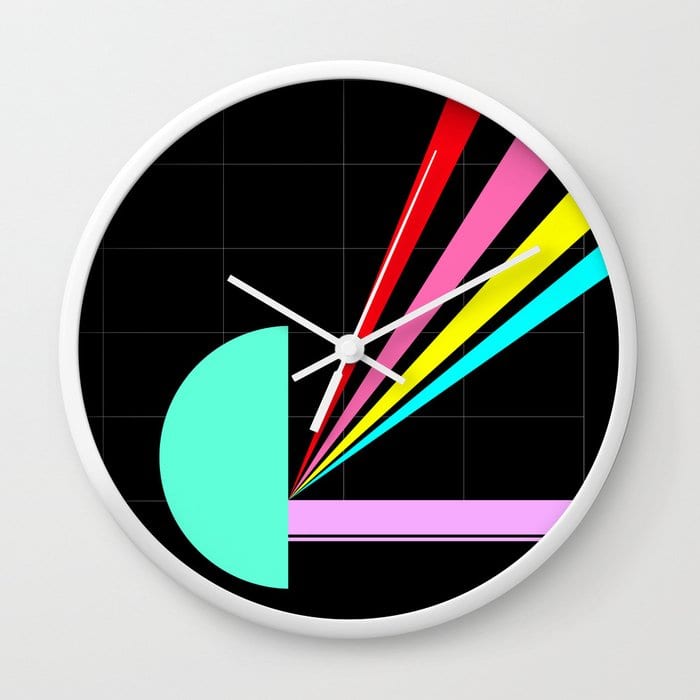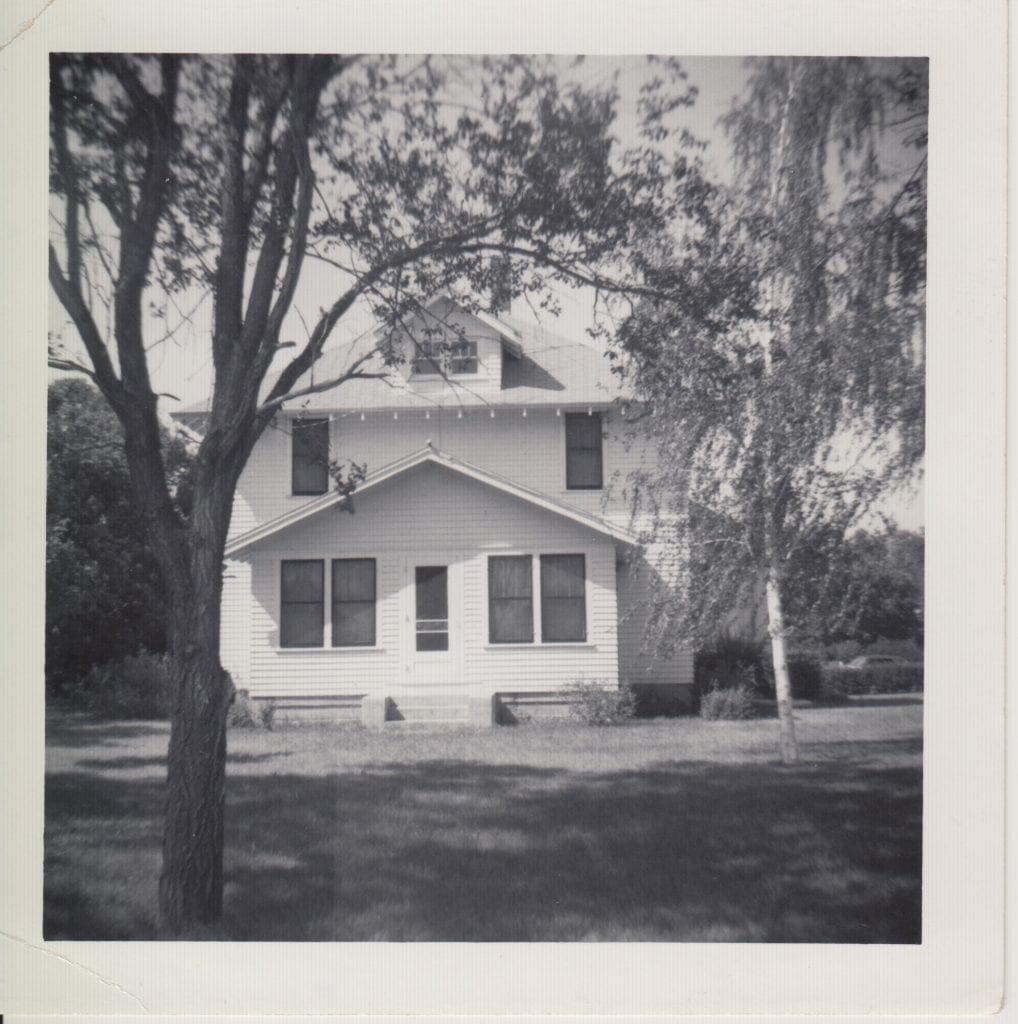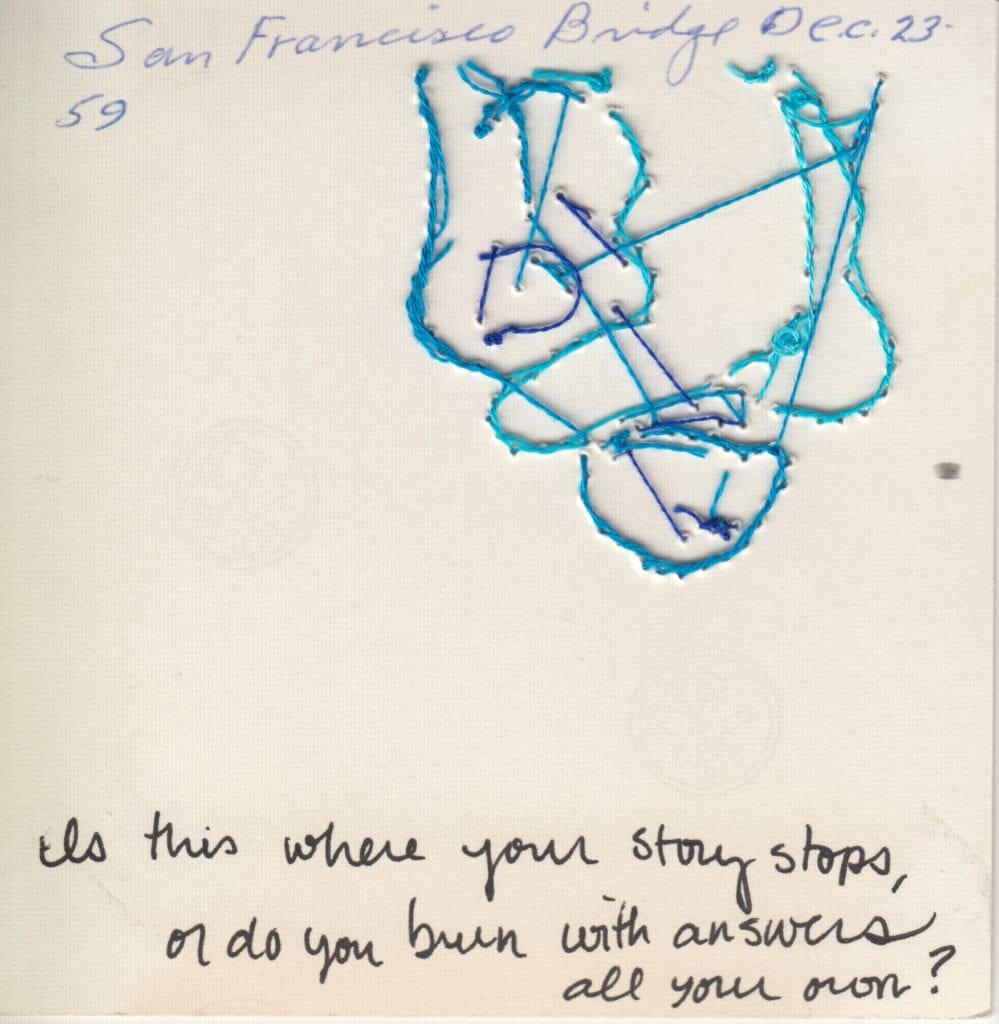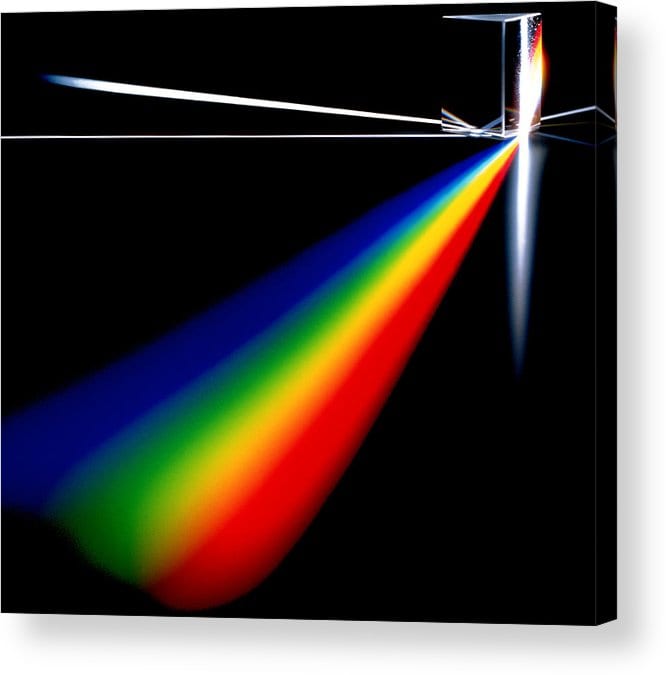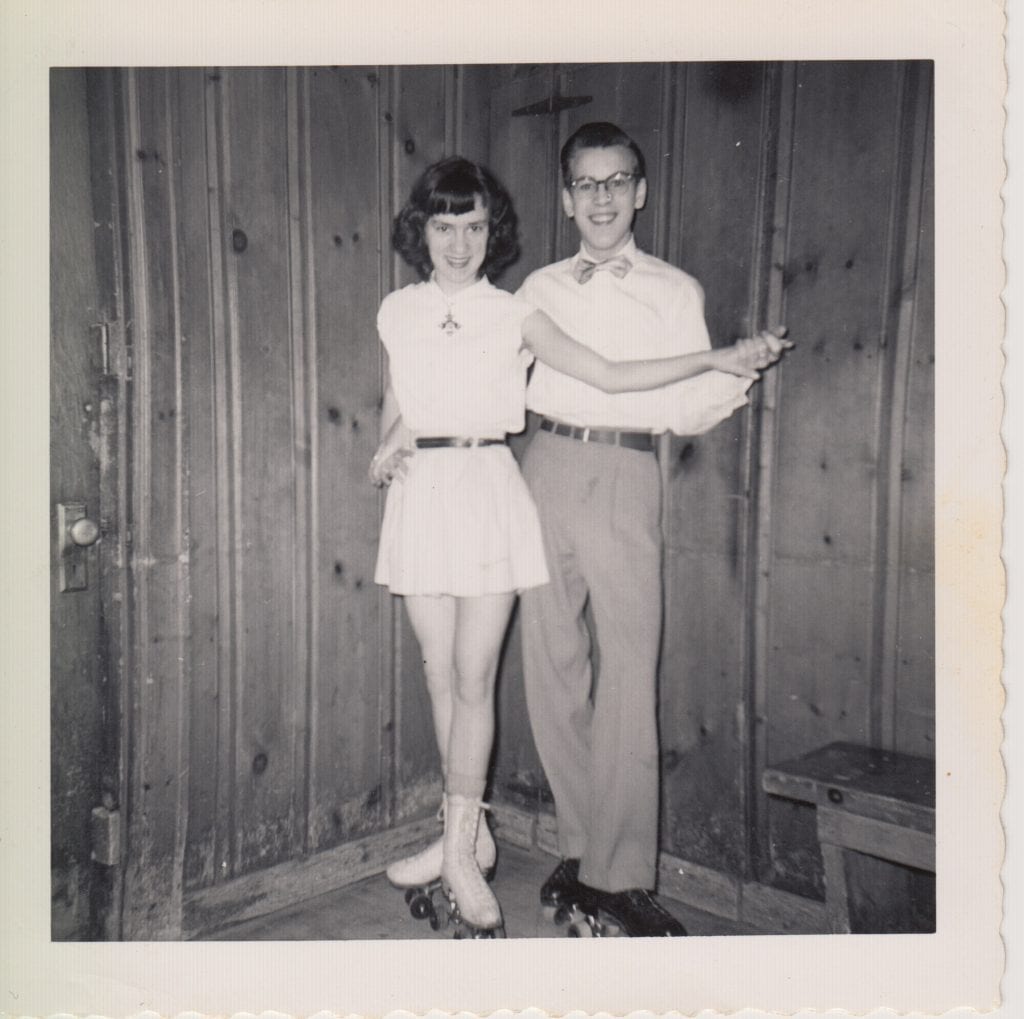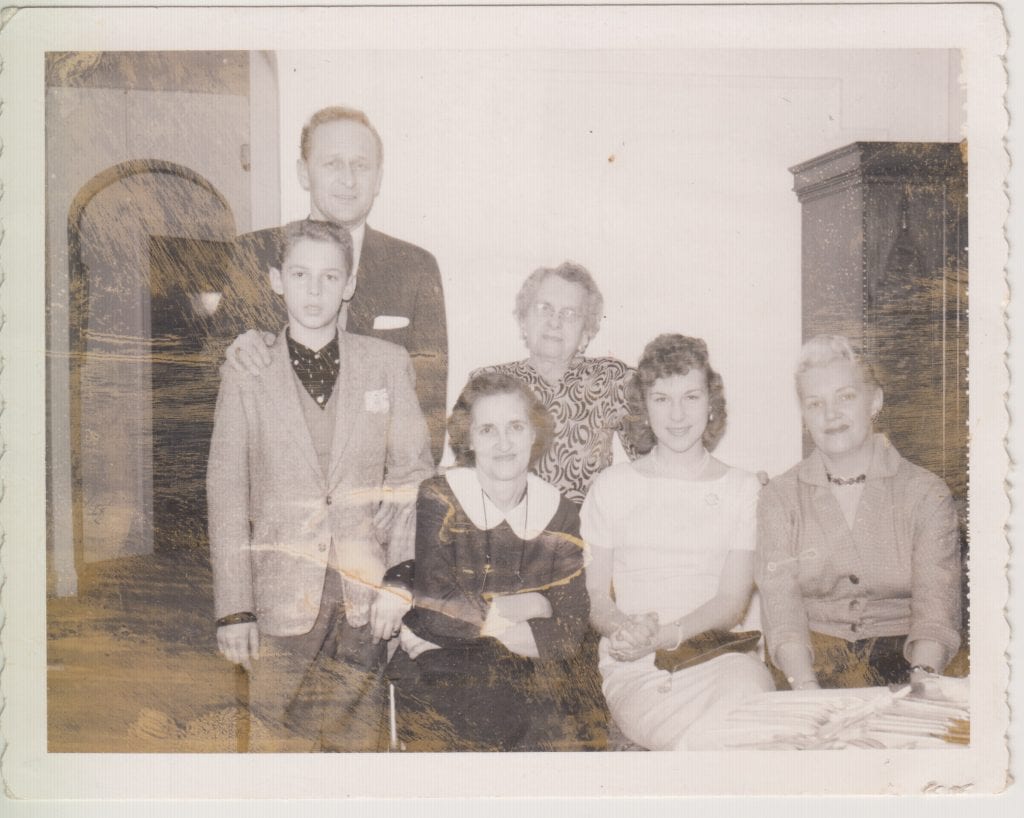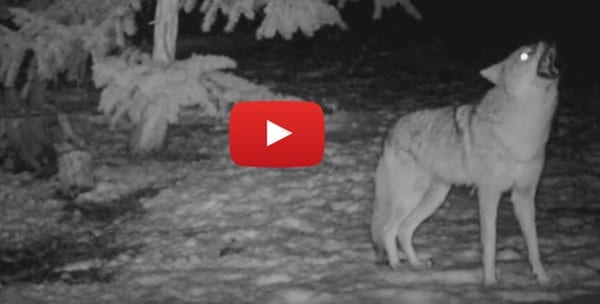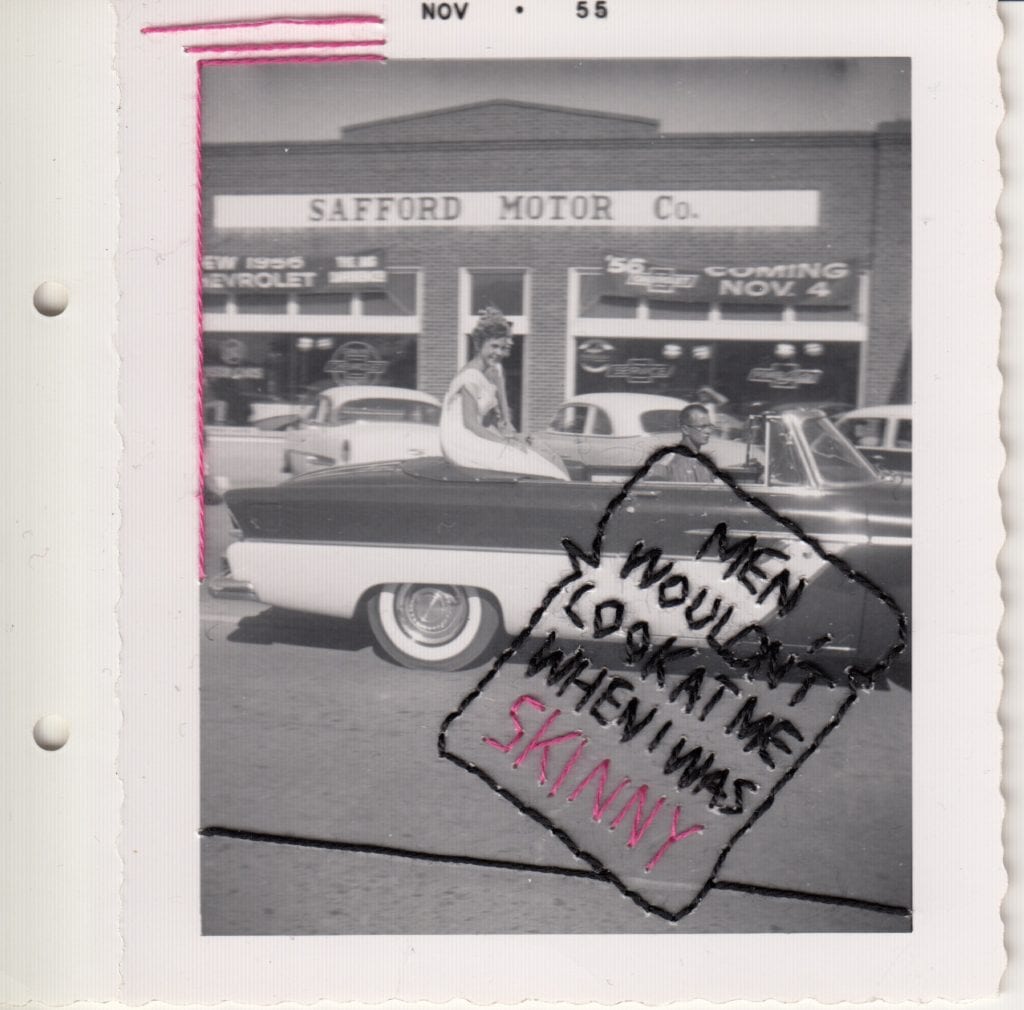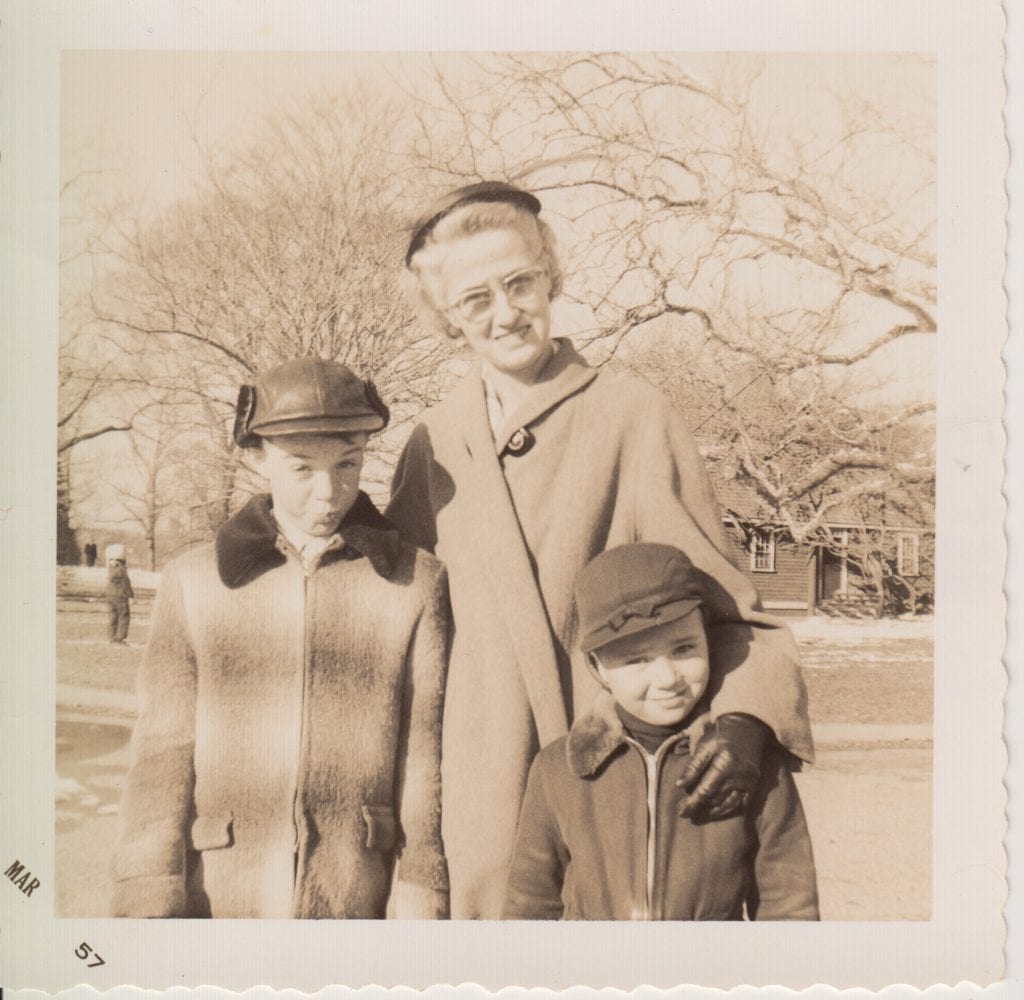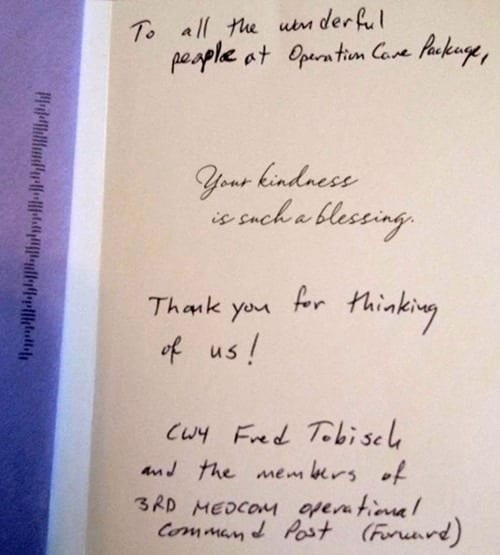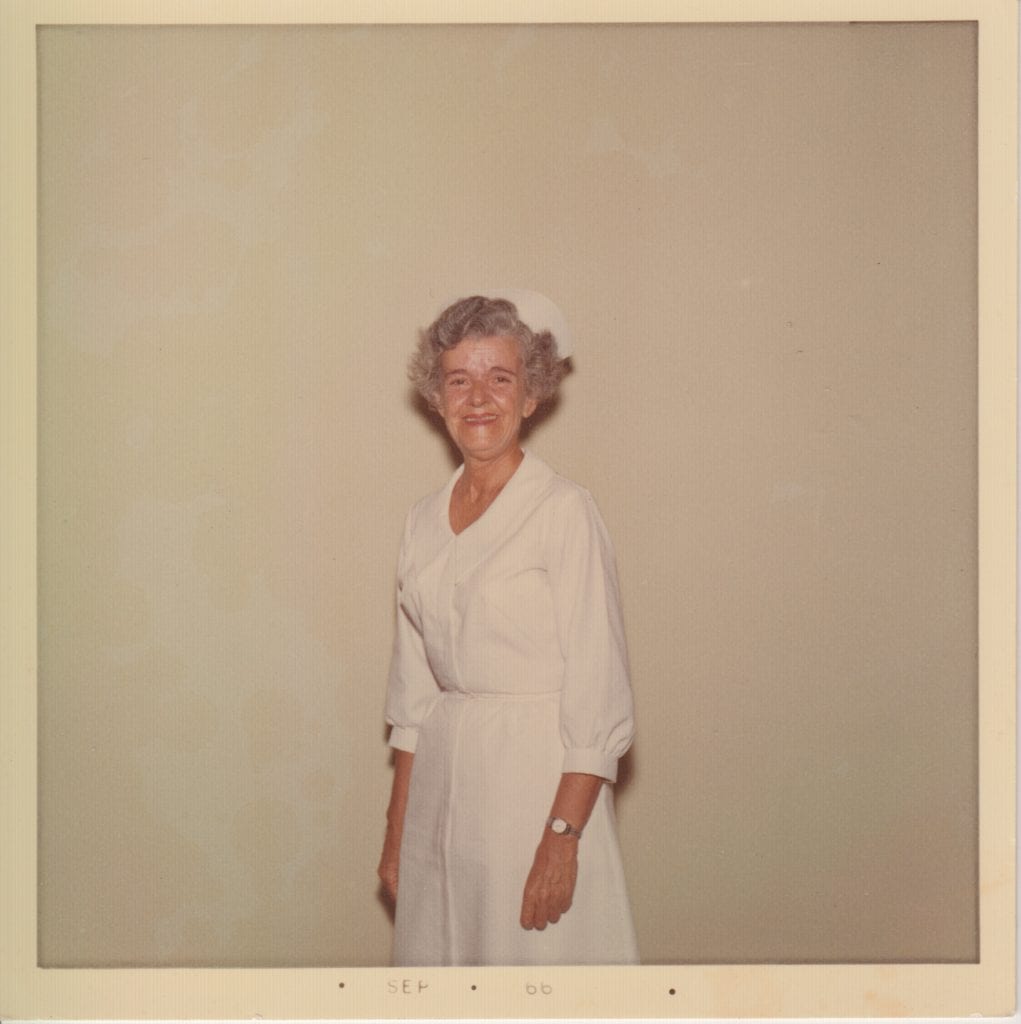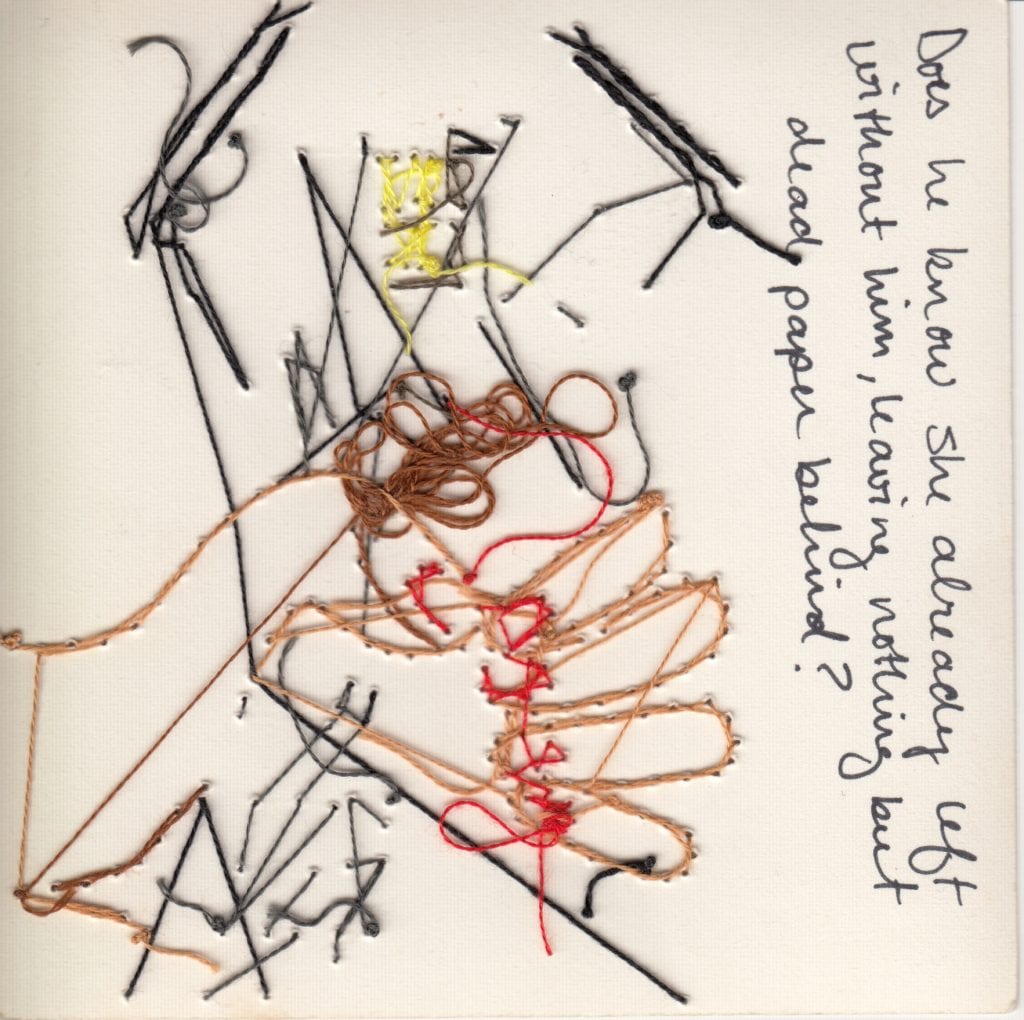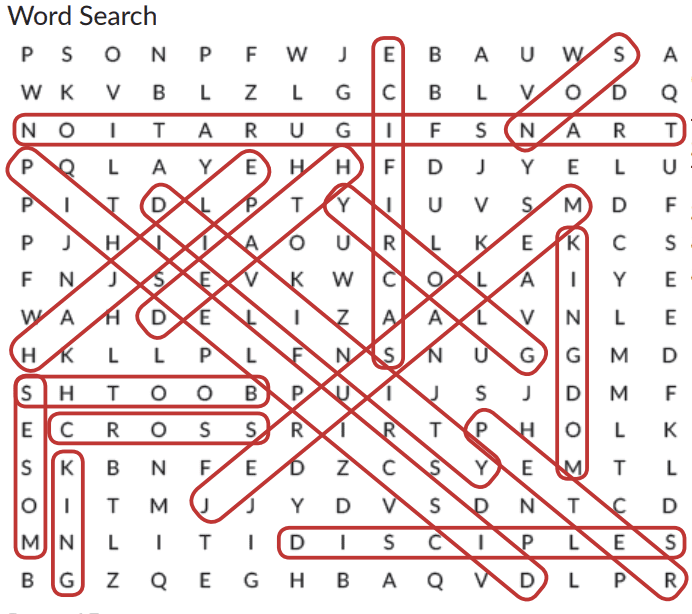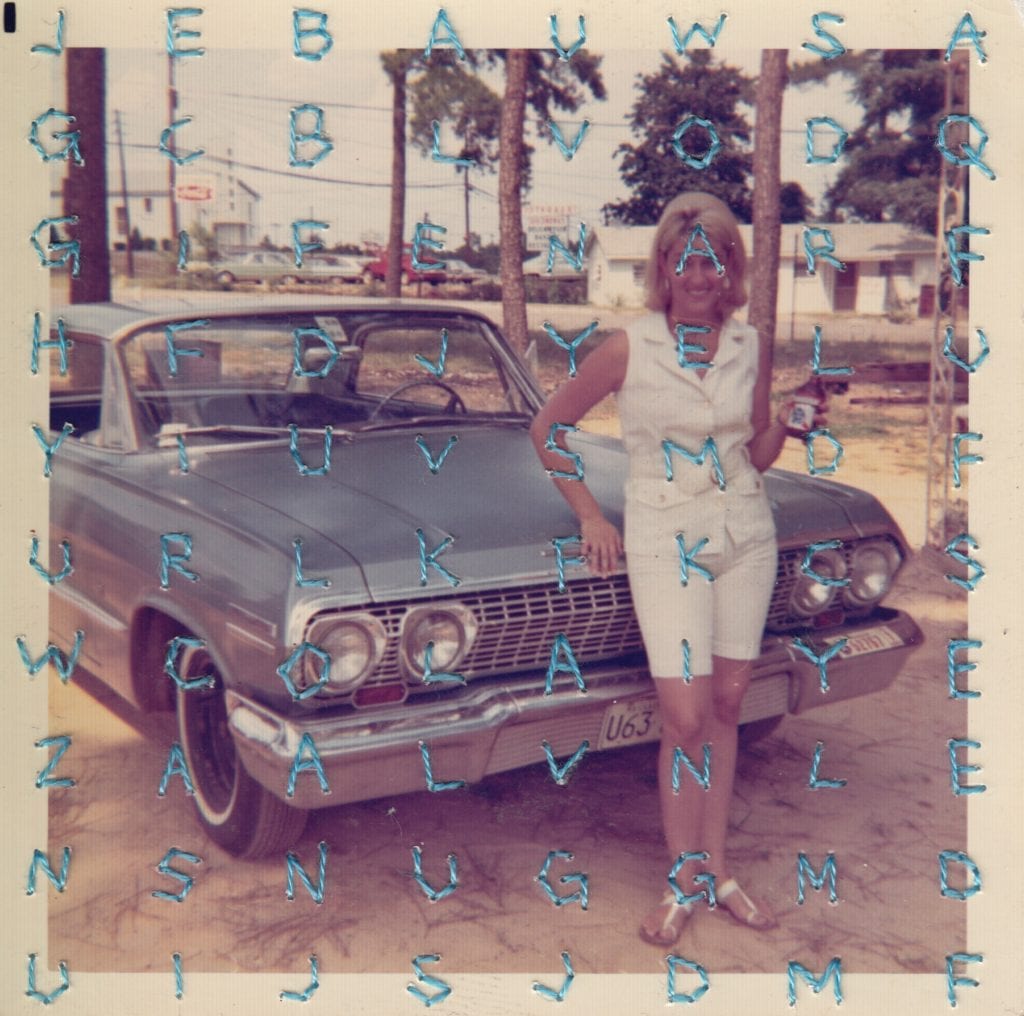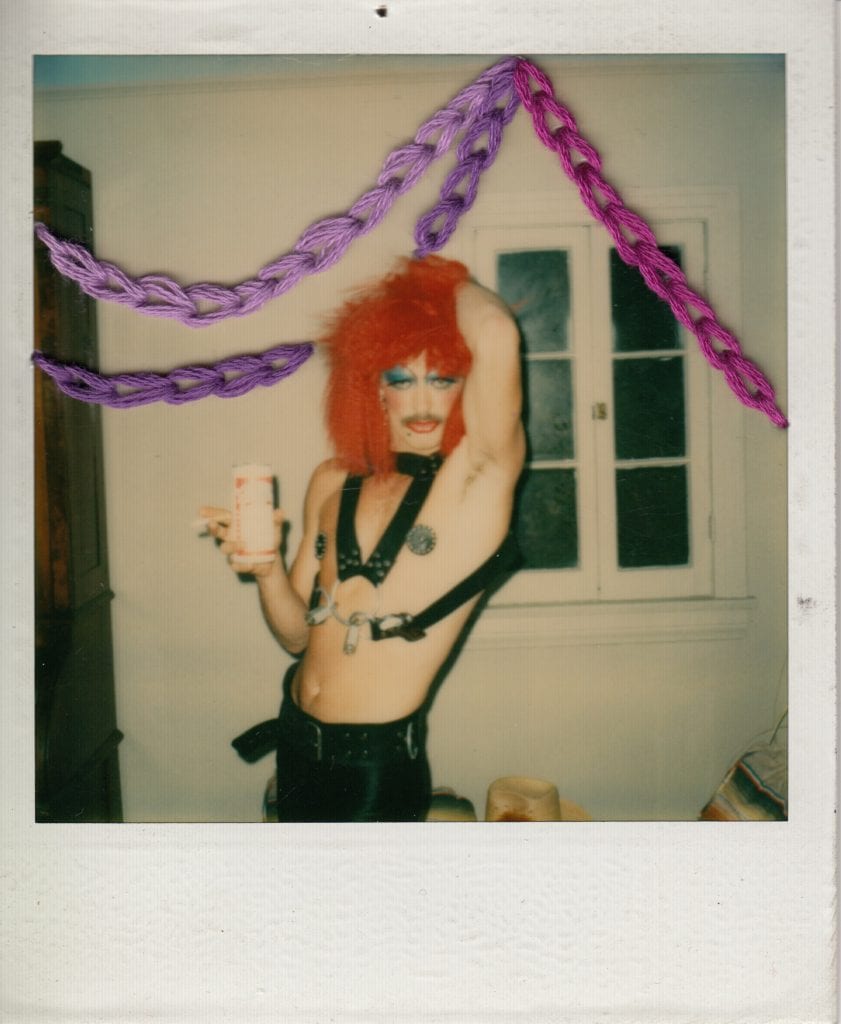My visual art practice started with embroidery in 2016 because of sobriety, but I think I was particularly drawn to threaded work because I already knew my way around needle and thread. I had learned how to sew as a kid through 4-H projects. My Great Aunt Alice, an incredible seamstress (and elementary school secretary), was my guide. Several weekends every spring, Mom would drive my sister and I out to the other side of the county and drop us off at my aunt’s small brick house. There, we’d cut out our fabric, prep our bobbins, and get to work on the sturdy sewing machine she kept tucked away in her bite-sized kitchen.
I loved hanging out with my Great Aunt Alice—but I hated the work. Sewing is, like, mind-numbingly tedious to a pre-teen/teenager, and I just wanted to play outside! My favorite moments on those sewing sleepover weekends was when the three of us would walk the quarter-mile country lane between Alice’s house and our great grandma’s farm for a visit and a snack. (And that the one time we watched NASCAR at her house, Dale Earnhardt died. I watched the fatal crash while ripping out seams on a jumper, slack jawed and entranced. “Is NASCAR always like this?!” It’s the only car race I’ve ever watched. Weird.)
My bad attitude aside, those formative stitching experiences did teach me, at least, to be confident around needle and thread. So when I hauled my begrudging but hopeful self into a JoAnn Fabrics at age 30, after more than a decade avoiding anything of the sort, it was like finding an old, steady friend. And an old, steady friend was exactly what I needed in early sobriety (and exactly what I needed at the beginning of a visual practice as a writer who thinks she’s “bad at art”). But now it’s four years on. Why is thread still an ideal material for me?

Thread makes me slow down and take my time. Now that I’m no longer a jangly bundle of teenage hormones, I appreciate the meditative space of sitting still to work on something for a long period of time. I can’t rush a piece of embroidery without running the risk of ripping the photograph and, thus, wasting time and resources, so it has a practicality to it. However, my appreciation for thread is philosophical and psychological too. Like the Oregon Trail Millennial that I am, I remember life before the internet and recognize that technology has our lives going at an unusually warp speed. It’s the digital wild wild west and it’s cool but also awful and it’s, ultimately, exhausting. The act of pushing a needle through another material is some throwback shit that is simultaneously novel to me.
Working with thread is a physical experience. When I’m working on an embroidery piece, I’m using my fingertips to delicately thread a needle versus, as per 21st-century-usual, steering them toward a screen to unlock or a virtual thumbs up to give. This physicality is a complementary contrast to my writing practice. Writing is physical for one part of my body—my fingers, as I type. But embroidery of even the smallest of stitches requires many movements in one: pulling from my shoulders, a lean back of my spine, an in-breath as I push the needle in, an out-breath as I pull the thread through. And again. I enter a repetitive physical trance that centers me in my body and asks me to stay. To “stay” is an essential physical and emotional skill, and it’s one that embroidery helps me practice on a daily basis.
Thread can’t be saved on a hard drive. A half centimeter flower made of thread can take me half an hour to get right, and there are images I fuck up but keep working on in order to practice certain stitches or colorways. And, gasp, I never share these publicly. (Doing something expressive we enjoy without talking about it on social media is a cultural novelty at this point!) These practice uh-oh pieces are, I think, not unlike the delicate Buddhist sand mandalas that are purposefully swept away (to dust you shall return!) when they’re complete, an act that symbolizes the impermanence of, well, everything (RIP Dale Earnhardt). I can get lost in time while making an embroidery piece. More accurately, time becomes unnecessary, I become present in each moment and in each breath. With thread, I don’t feel that profound, full-body loss of time when I’m writing or designing something on my computer. What a gift!
“It is particularly pleasing for me to see that the language and imagery associated with embroidery is suddenly to be found everywhere in modern life. Words traditionally associated with needlework now permeate digital and scientific language—we talk of email threads, strands of DNA, the web, the new, and now, most satisfying of them all, string theory. An embroiderer will identify immediately with the idea that the universe and its contents are made up of sub-atomic loops and threads. // To admire a piece of hand embroidery is to appreciate time itself—your fingertips can almost touch the hours, days, and weeks embedded in every stitch. I urge the readers of this book to relish the relaxing pace that the medium requires. This pace and the attention to detail needed can be the perfect antidote to the distractions of modern life. The projects presented here will introduce you to core embroidery techniques—nurturing a focus, patience and precision that I hope will be as rewarding to you as the finished pieces themselves.”
— Embroidery: A Maker’s Guide
Thread has a universality and timelessness to it that makes it a symbolically valuable material. Another artist once described my inclination to start embroidering as a method for entertaining myself in early sobriety as a symbol of doing the work of recovery—I was “bringing light to the darkness, one tiny needle punch at a time.” I love this analogy, and I’m not alone in using thread to heal and to, quite literally, unite. Thread has been a lifeline for the working class for centuries and every culture and generation has found a way to subvert both its utilitarian one-dimensionality and its aristocratic exclusivity (i.e., embroidered embellishments were once reserved for only the primped and powdered aristocrats) and transform the act of stitching by hand into an art form, a storytelling medium, and a connective lifeline between members of a spoken or unspoken community. It makes sense to me that the AIDS Memorial Quilt was a quilt, for example—that needle and thread were the materials they chose for something so representative of both sides of the coin, the joy and celebration of an individual life, a single stitch, a single breath, the sadness and anger tied to the injustice of not “clothing” these brothers and sisters, etc.
Thread is a demarcation of an expedition, each stitch a breadcrumb on the path. The stitches are small, but their size is disproportionate to their meaning. They hold so much in their strands.







